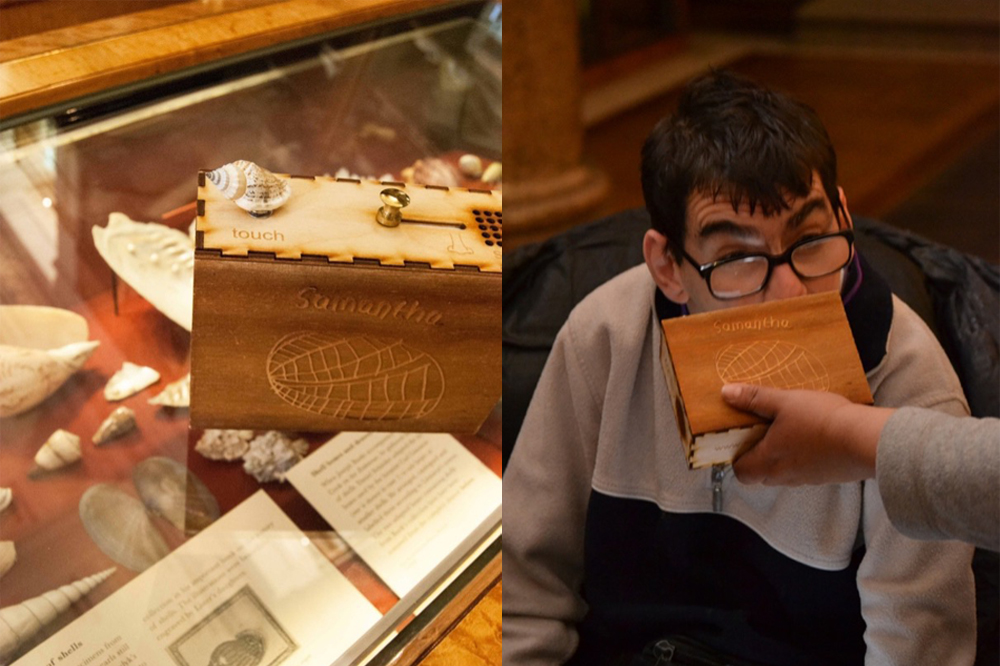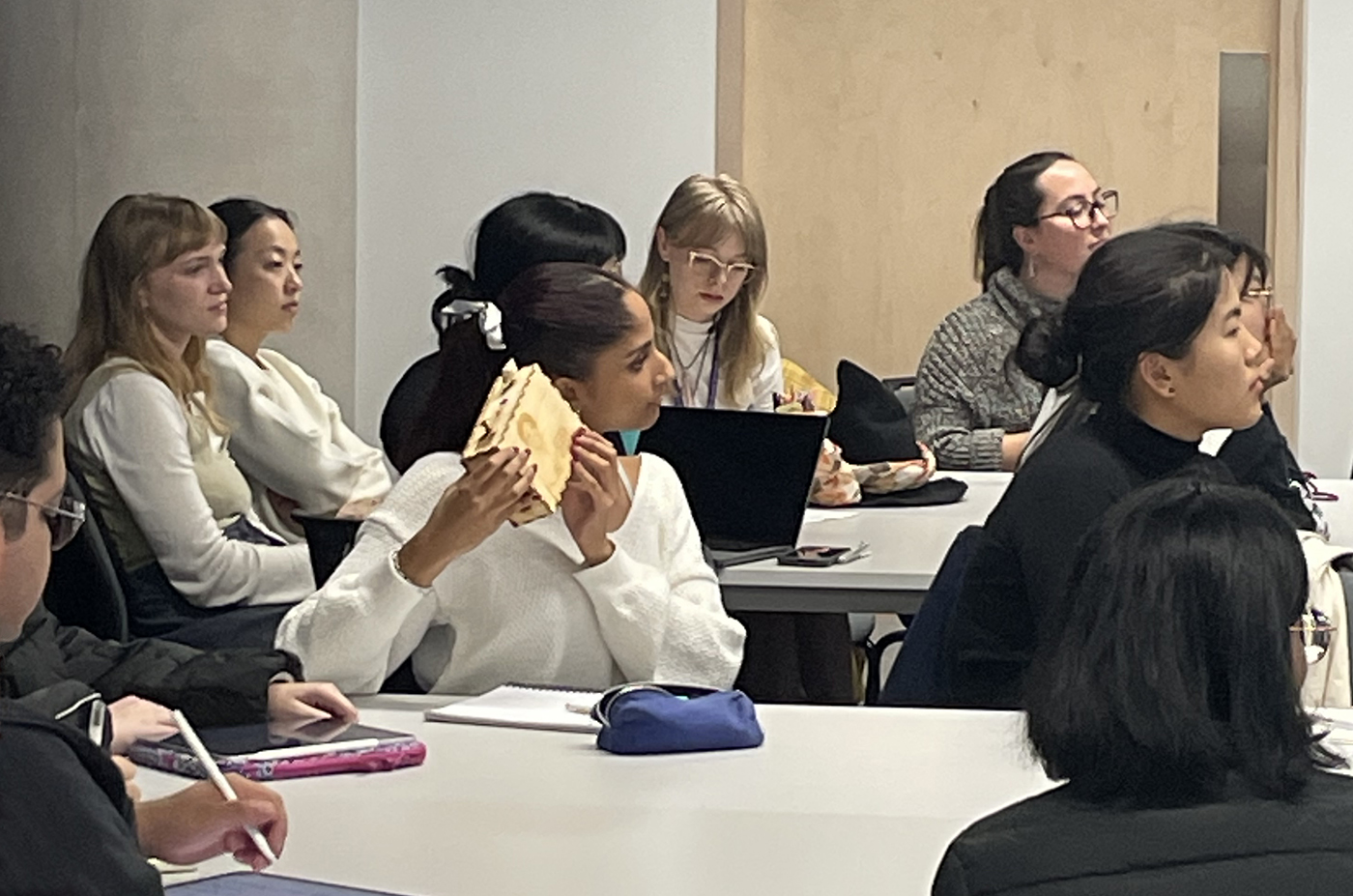On Tuesday 31 October, purpleSTARS gave an insightful and inspiring presentation to 30+ University College London (UCL) masters students who will be involved in the delivery of health and social care in the future.
Every year since 2021, purpleSTARS have been invited to present and share our lived experiences and our projects – how we carry out our sensory objects action research – to UCL students in the Creative Health MASc course, as part of the lived experience in policy, practice, and research module. As always, we were thrilled to be invited again, this time to their new campus, UCL East, based in Stratford, East London.
In our unique purpleSTARS way, we spoke about our past projects and our current Mindsets + Missions project with Amgueddfa Cymru/Museum Wales and Innovate Trust, Newid Byd | Something New. We spoke about the importance of making museum and cultural experiences inclusive and accessible.
The students particularly enjoyed our demonstration of how objects, and engaging the five senses, can bring about more engaging experiences.

An unexpected and welcome highlight was the homemade chocolate apples and lemon drizzle cake that the students had made for us to enjoy at the end of our presentation, as we talked about different ideas and played smell bingo!

I’ve learned that there are other ways to incorporate inclusivity into different spaces that are usually not inclusive, like museums or libraries, and that it does require some creativity, and community as well.
UCL masters student
All of us enjoyed the afternoon as we love telling everyone about our work, but more importantly, because the Creative Health MASc is the first course of its kind. This presents us with a great opportunity to impart our knowledge, share our lived experiences and inclusive research expertise, and highlight the positive impact that access to arts and cultural activities has. We realise our shared experience will influence a new generation of socially engaged practitioners who will pioneer services to meet the changing needs of health and social care.
Student feedback videos
What is Creative Health
Creative Health uses creative approaches and activities to promote health and wellbeing.
Activities can include visual and performing arts, crafts, film, literature, cooking, and creative activities in nature, such as gardening.
Current research shows that participating regularly in activities to do with arts, culture, and creativity is beneficial for everyone’s health and wellbeing.
Alongside modern medicine, the use of creative health activities and approaches can help individuals manage long-term conditions, improve mental health, promote healthy aging, and address health inequalities, by also reducing pressure on health and social care services.
Why is Creative Health important?
Over recent years there has been a greater understanding of the beneficial impact that arts, culture, and creativity can have on our health and wellbeing. This has led to innovative approaches such as social prescribing. Championed by advancements in research, the World Health Organisation, Arts Councils, and the UK Government, through the All-Party Parliamentary Group on Arts, Health, and Wellbeing, produced the report, Creative Health: The Arts for Health and Wellbeing
There has been a shift within the NHS and in social care in recognising the importance that creative health has in supporting health and wellbeing on an individual level as well as on a community and society level.
Written by Kanchan Kerai, Kate Allen
Pictures and videos by Ajay Choksi
National Cenre for Creative Health
The Arts for Health and Wellbeing

